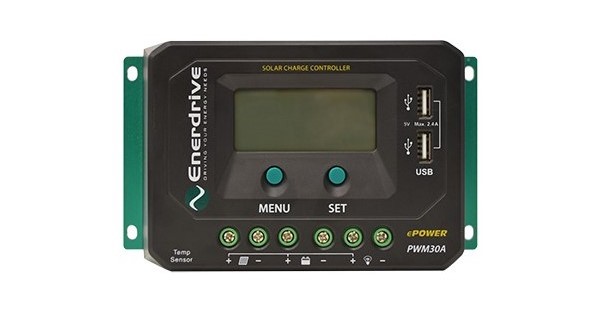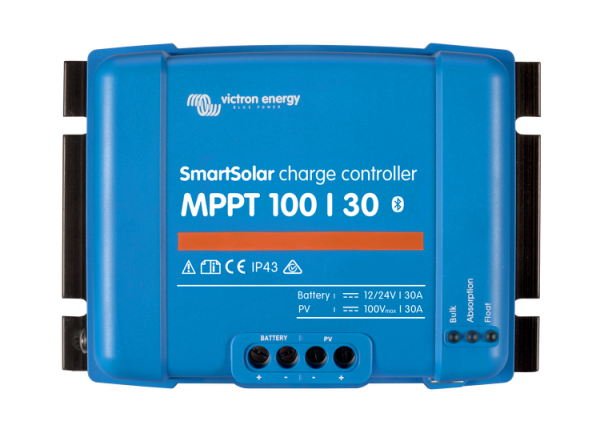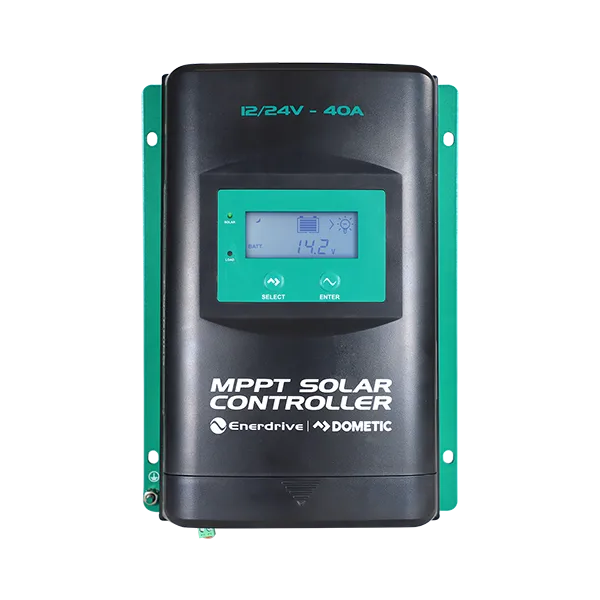Which solar regulator should you choose: MPPT vs PWM?
MPPT and PWM charge controllers are both used to regulate the power from solar panels to charge batteries.
But when it comes to MPPT vs PWM, which one is best for your needs?
Read on to find out.
-
What Is A Solar Regulator?
A solar regulator, or solar charge controller, is required if you have a solar power system with batteries.
The job of the solar regulator is to regulate the power from the solar panels to the batteries, so your panels don't overcharge your batteries. Overcharging batteries can significantly reduce battery life and even damage the batteries irreparably.
The solar regulator can also detect when no energy is coming from the solar panels (like at night) and disconnect the solar panels from the batteries to stop reverse current flow.
MPPT and PWM are both energy control methods used by the charge controller to regulate the current flowing from the solar panel to the battery.
-
How PWM Works:
PWM stands for Pulse Width Modulation. It slowly lowers the amount of power going to the batteries as they get closer and closer to being fully charged.
The PWM controller is essentially a switch that connects a solar array to a battery, so the voltage of the array will be pulled down to near that of the battery.
The PWM controller allows the batteries to be fully charged without adding stress on the battery, so your batteries last longer. It can also keep batteries in a fully charged or "float" state indefinitely.
-
How MPPT Works:
The newest and more sophisticated type of solar charge controller is called Maximum Power Point Tracking (MPPT).
The MPPT controller will adjust its input voltage to harvest maximum power from the solar panels, and then transform this power to provide the varying voltage requirement of the battery plus load.
So, you can have a 12-volt battery on one side of the MPPT regulator and, on the other side, have a large number of cells wired in series to produce 36 volts.
MPPT vs PWM:
-
Charging Efficiency:
An MPPT regulator helps reduce power loss. Because it essentially converts the excess voltage into additional amps, using an MPPT controller allows much higher voltages in the cables running from the panels to the solar charge controller.
Compare this to the PWM regulator, where the voltage from the solar panel to the charge controller typically has to be 18V to charge 12V batteries.
When comparing MPPT vs PWM, the performance advantage of the MPPT is between 10% and 40%, when the solar cell temperature is low (below 45°C) or very high (above 75°C).
-
Applications:
One of the drawbacks of PWM is that the solar input nominal voltage must match the battery bank nominal voltage.
If you want to regulate grid connect modules for battery charging, you can only use MPPT. PWM cannot be used on higher voltage grid connect modules.
-
Size Of The System:
MPPT controllers let you have an array with higher input voltage than the battery bank. MPPT size options go up to 80 Amps and give you more flexibility for system growth.
PWM controllers are available in up to 60 Amps and have limited capacity for system growth.
-
Warranty:
MPPT warranties are typically longer than PWM controllers. However, with PWM controllers, you get the peace of mind that they are a time-tested technology and have been used for years in solar systems.
-
Durability:
PWM controllers are durable and most come with passive heat sink style cooling.
-
Cost:
MPPT units are more sophisticated which means they are more expensive sometimes costing double the price of a PWM controller.
-
When To Choose A PWM vs MPPT Controller:
-
The PWM is a good low-cost option for:
-
Smaller systems
-
Where the efficiency of the system is not critical
-
When solar cell temperature is moderate to high (45°C to 75°C).
Check out this Morningstar Tristar PWM controller.
-
The MPPT controller is best for:
-
Larger, higher power systems
-
When the array voltage is substantially higher than the battery voltage
-
When the solar cell temperature is low (below 45°C) or very high (above 75°C)
If you're looking to buy them individually, we recommend one of Enerdrive's new solar controllers including this 40 Amp controller:
Another option is that some DC2DC battery chargers, like the Enerdrive ePOWER DC2DC Battery Charger, have an in-built MPPT solar controller. Or have one included on a power system board.
-
Check out our range of MPPT and PWM solar regulators online today!
-
DISCLAIMER* Please note, this advice is general in nature and we strongly recommend consulting the product manual and where relevant, a professional installer.












